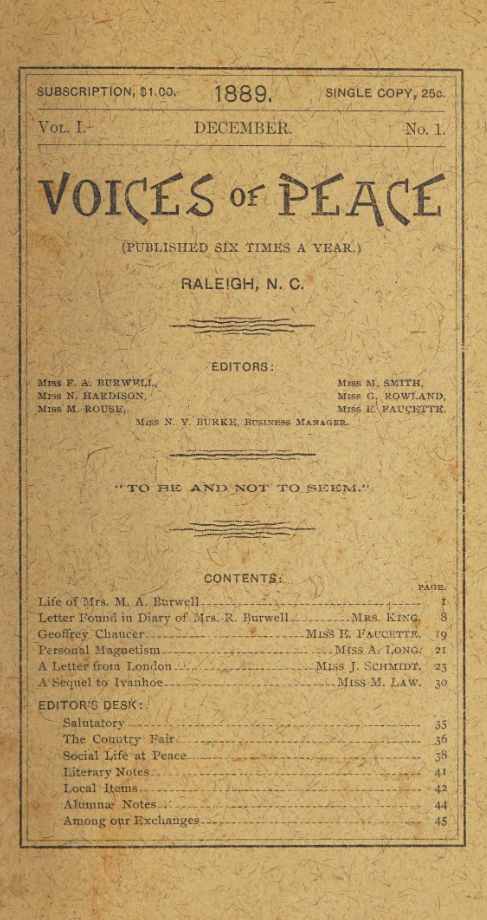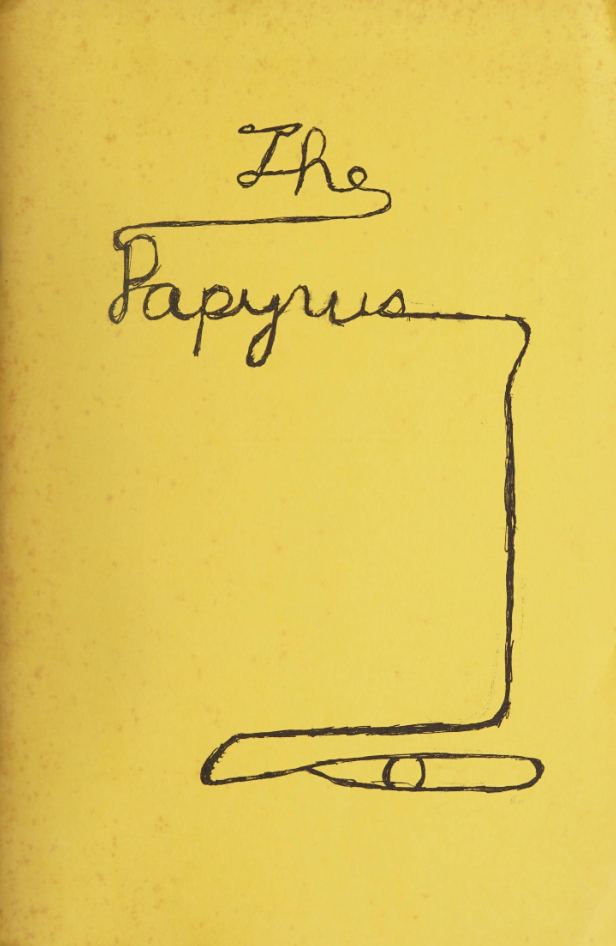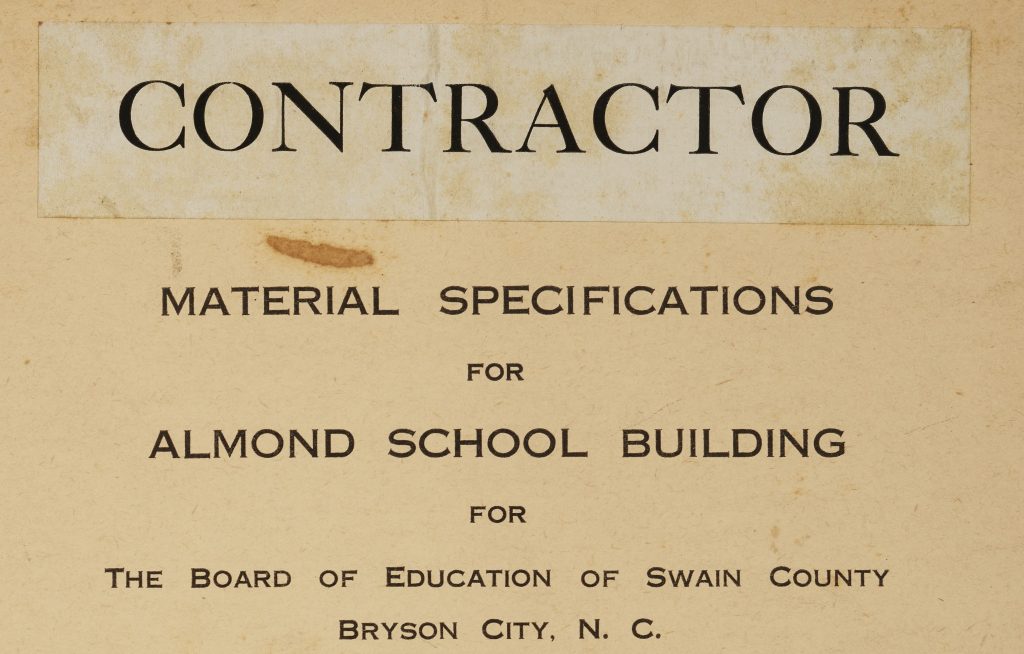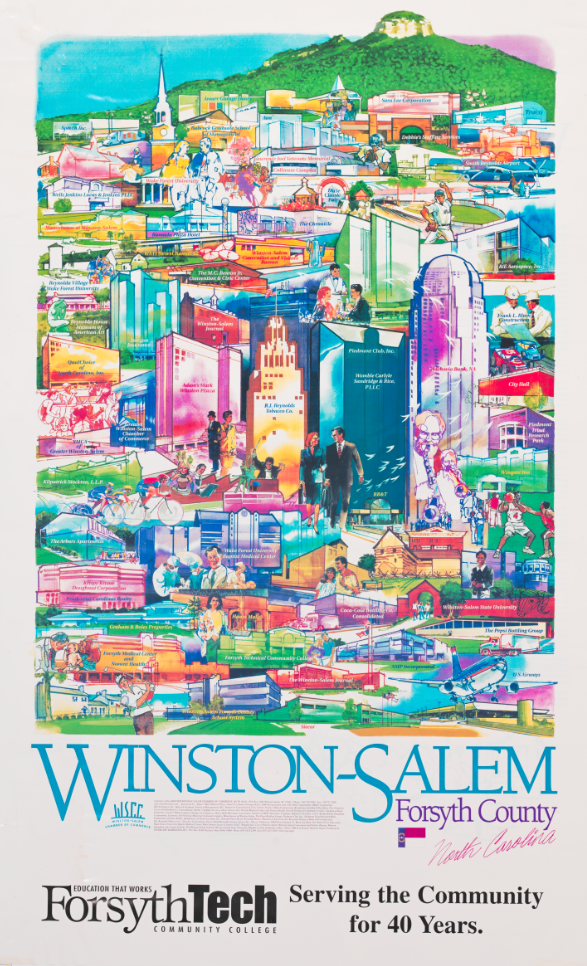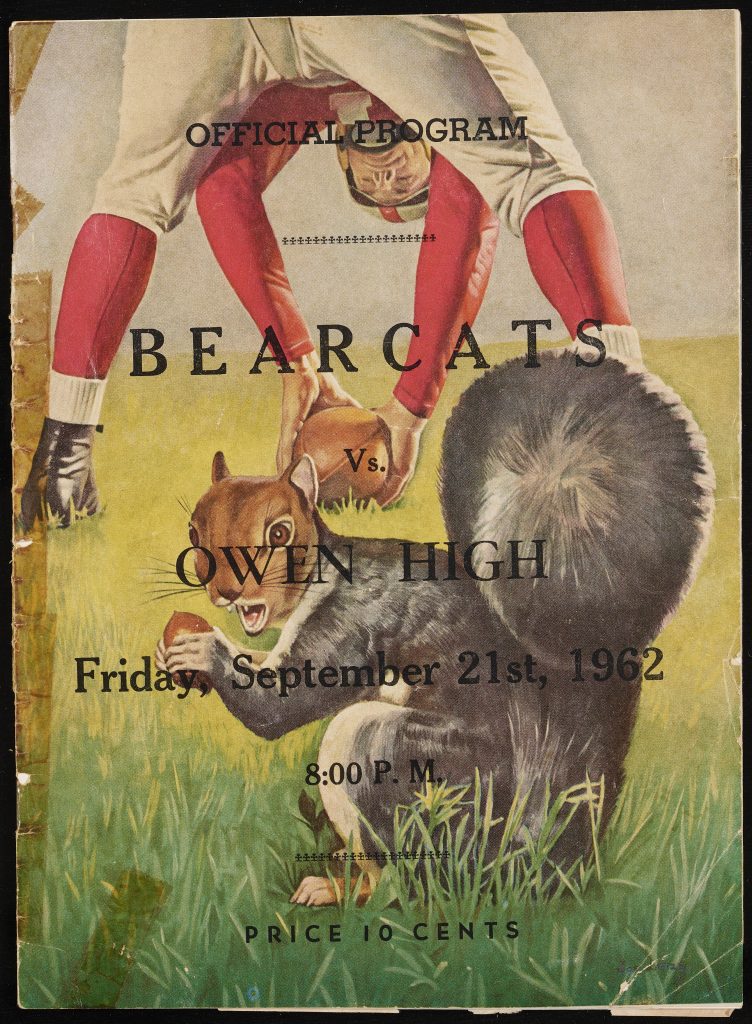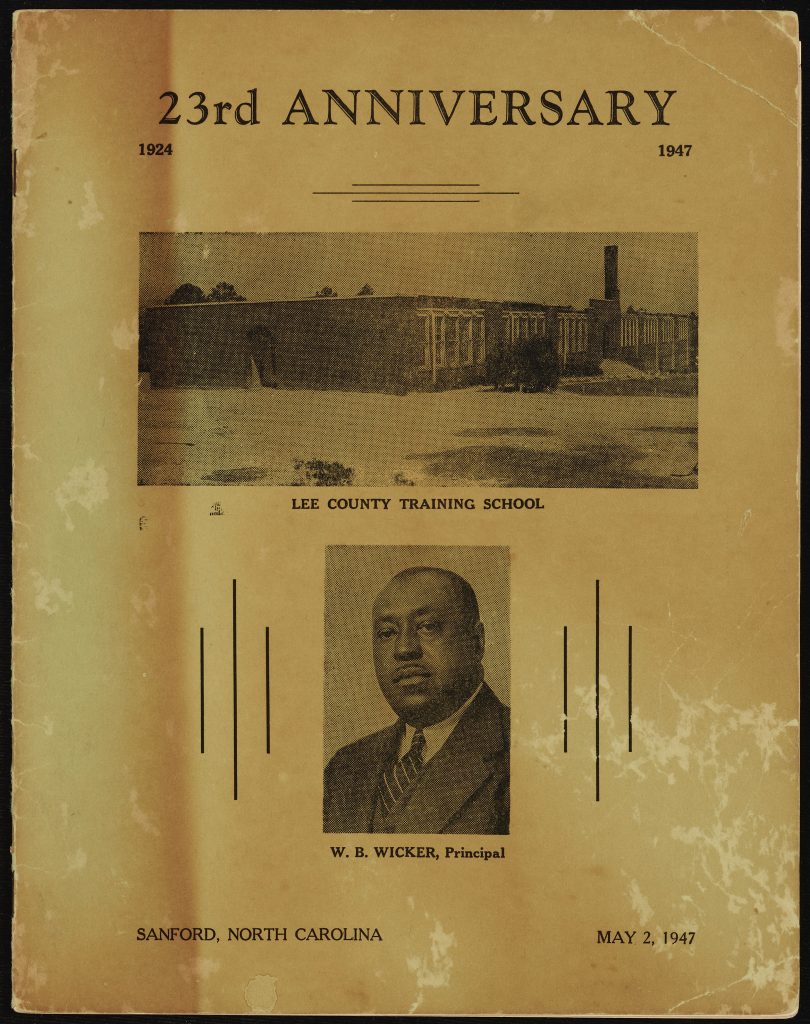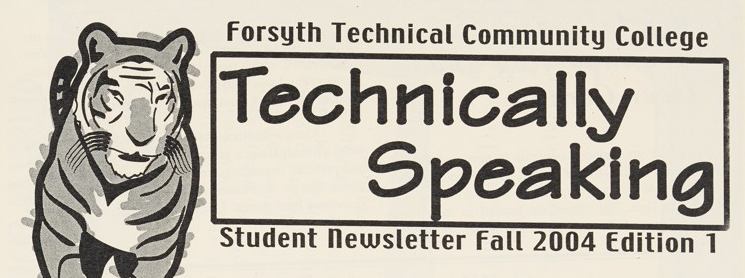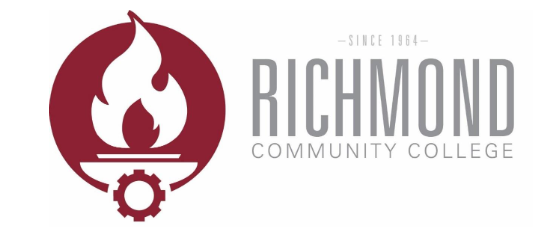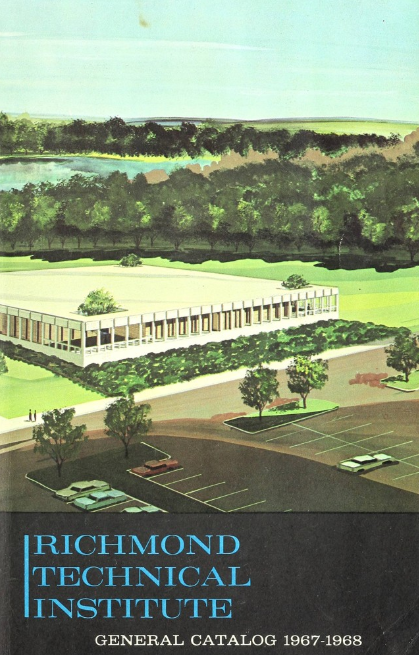With the help of our partners at William Peace University, we are excited to announce the addition of new literary magazines from William Peace University and early 20th century photographs taken at the University of North Carolina at Chapel Hill. The four latest literary magazines, Prism [2018], Prism [2019], Prism [2022], and Prism [2025], join 97 additional literary magazines that were already on DigitalNC. For over a 100 years of student art and literature, be sure to check out William Peace University’s literary magazine collection available on DigitalNC.
This newest batch also includes some old images of the University of North Carolina at Chapel Hill. Taken just 30 miles up the road from William Peace University, these five photographs show the campus environment of William Peace University’s collegiate neighbor. In addition to pictures of still-standing campus buildings like the South Building, this latest batch also includes pictures of bygone structures, like Swain Memorial Hall, which was the predecessor of present-day Memorial Hall. Perhaps most interesting of these pictures are two from around 1903 that show dorm interiors at the University of North Carolina at Chapel Hill. In one, a close up of a dormitory mantle shows dozens of pictures fastened to the wall and stacked on top of each other above a mantle. In another, the sitting area of a student’s dorm room is decorated with pictures and flags across the walls and door. Above the array of portraits adhered to the door is a small horizontal sign that reads “Pretty Girls Wanted!!”
More information about our partner, William Peace University, can be found on their website here.
More materials including over 100 years of the campus yearbook The Lotus can be found on William Peace University’s contributor page, which is linked here.
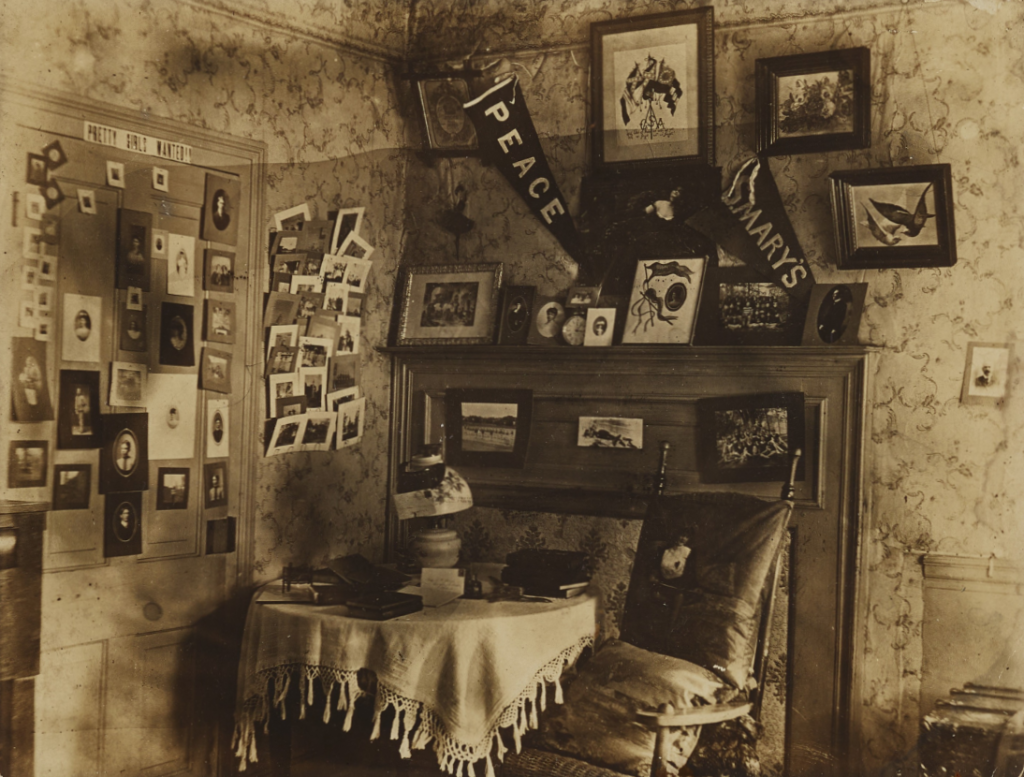
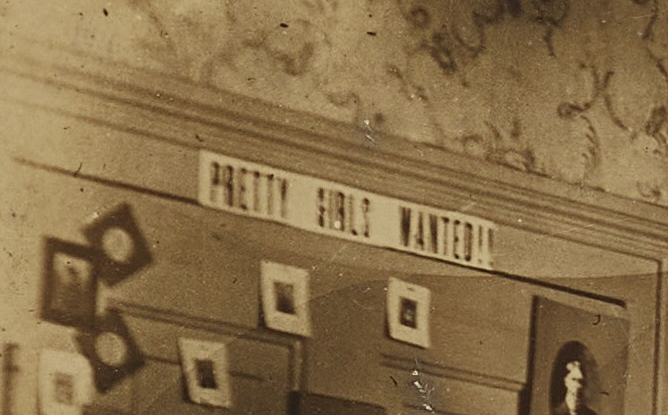
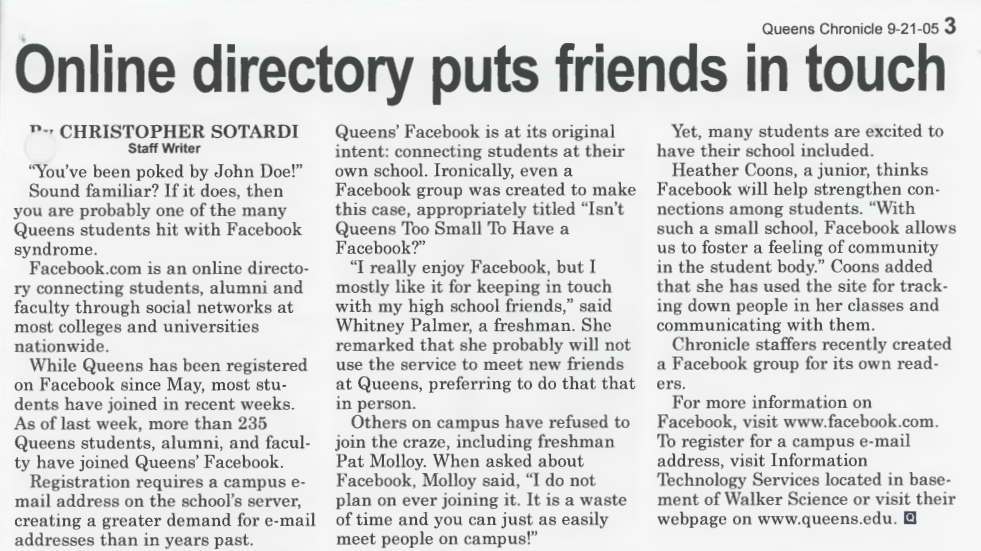
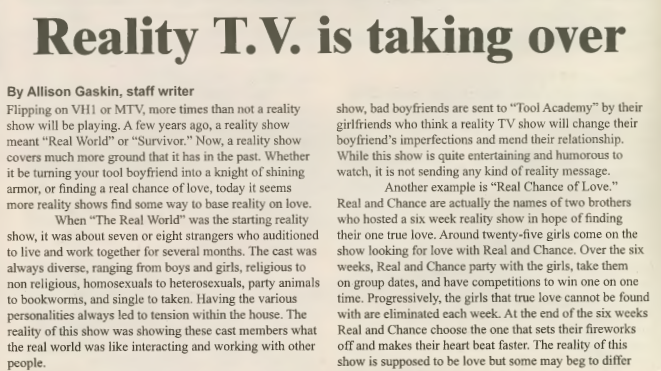

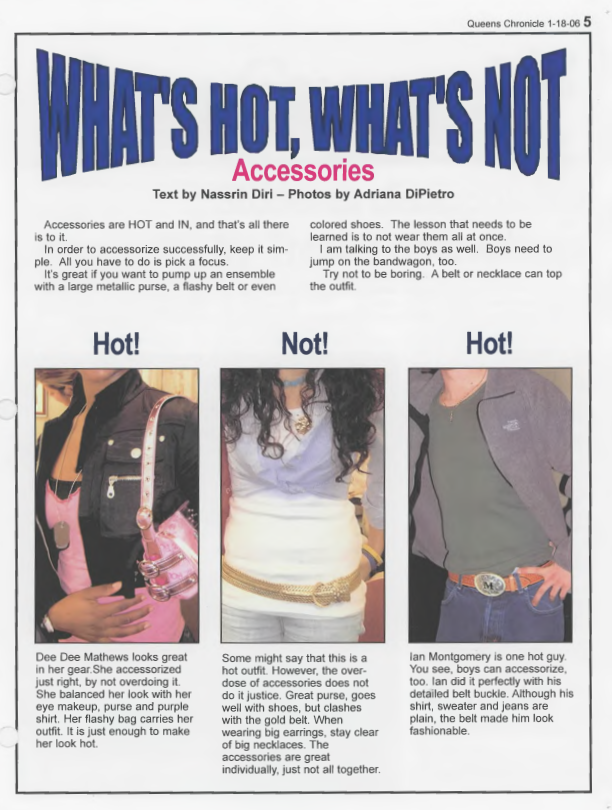
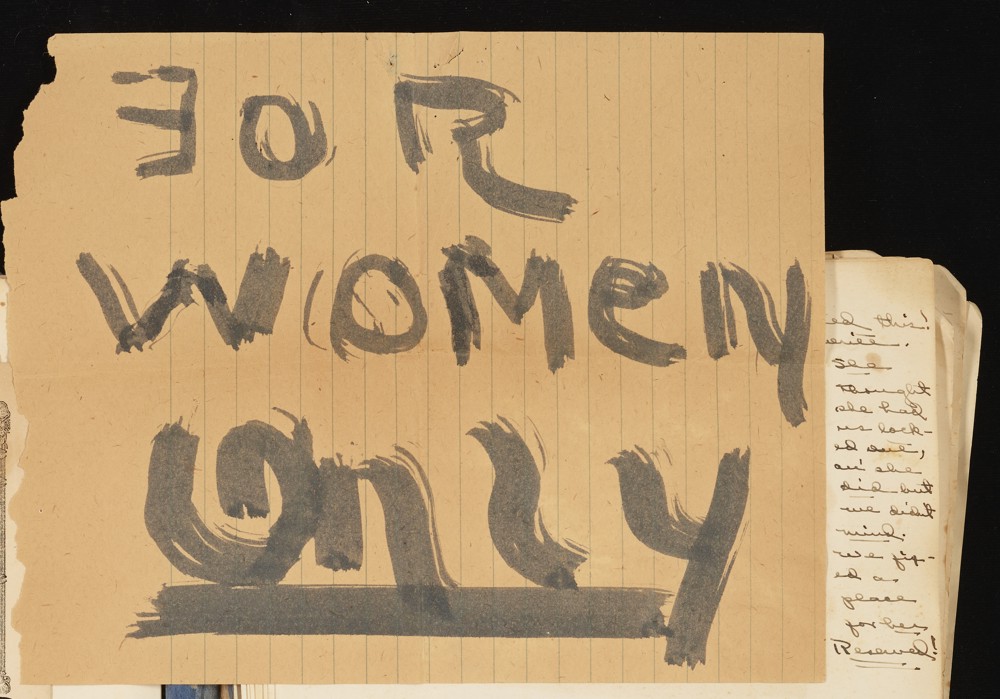
![Locks of hair in various colors. Written at the top of the page in cursive is: Just to re-member the exact shade. Next to the hair locks are names, from left to right, top to bottom the names written are: Annie, Marie, Sallie, Sarah, Mary, Mary Allan, and Margurite [?].](https://www.digitalnc.org/wp-content/uploads/2025/05/default-2.jpg)
